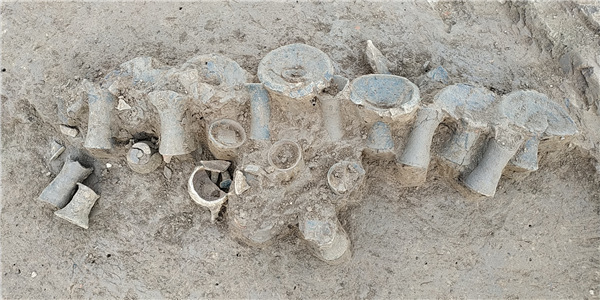 |
|
Ruins of the Yuzhuang site in Henan's Pingdingshan show a complicated ritual system in the late Neolithic period. [Photo provided to China Daily] |
More sites
Yet other archaeological findings do not exist in historical records at all.
At the Shizhuang site in Zhoukou, Henan province, a group of 28 ruined structures are thought to be barns following the discovery of carbonized millet in the earth. Carbon dating shows they are from 3,700 to 4,000 years ago, which is within the Xia period.
According to Cao Yanpeng, the leading archaeologist on the site, the round earthen piles were constructional foundations of barns elevated on stilts, while other samples in China from even earlier periods were usually cellars.
And surrounding remains show the site used to be a fortified city that possibly functioned to ensure national food security.
"It's crucial to our studies of early-stage states' government structures and tax systems," Cao says.
Also in Henan province, tombs indicating complicated ritual systems at the Yuzhuang site in Pingdingshan and the remains of jade craftsman's settlements at the Huangshan site in Nanyang portray a picture of different cultures communicating with each other and societies growing more complex.
Both sites date back to the late Neolithic period, on the eve of Erlitou's rise as a cultural core, which was also the twilight of civilization in Central China.
"I have to say, the new findings do not answer old questions," Song says.
"They raise more questions. But that's how our understanding of the Xia becomes enriched from different perspectives."